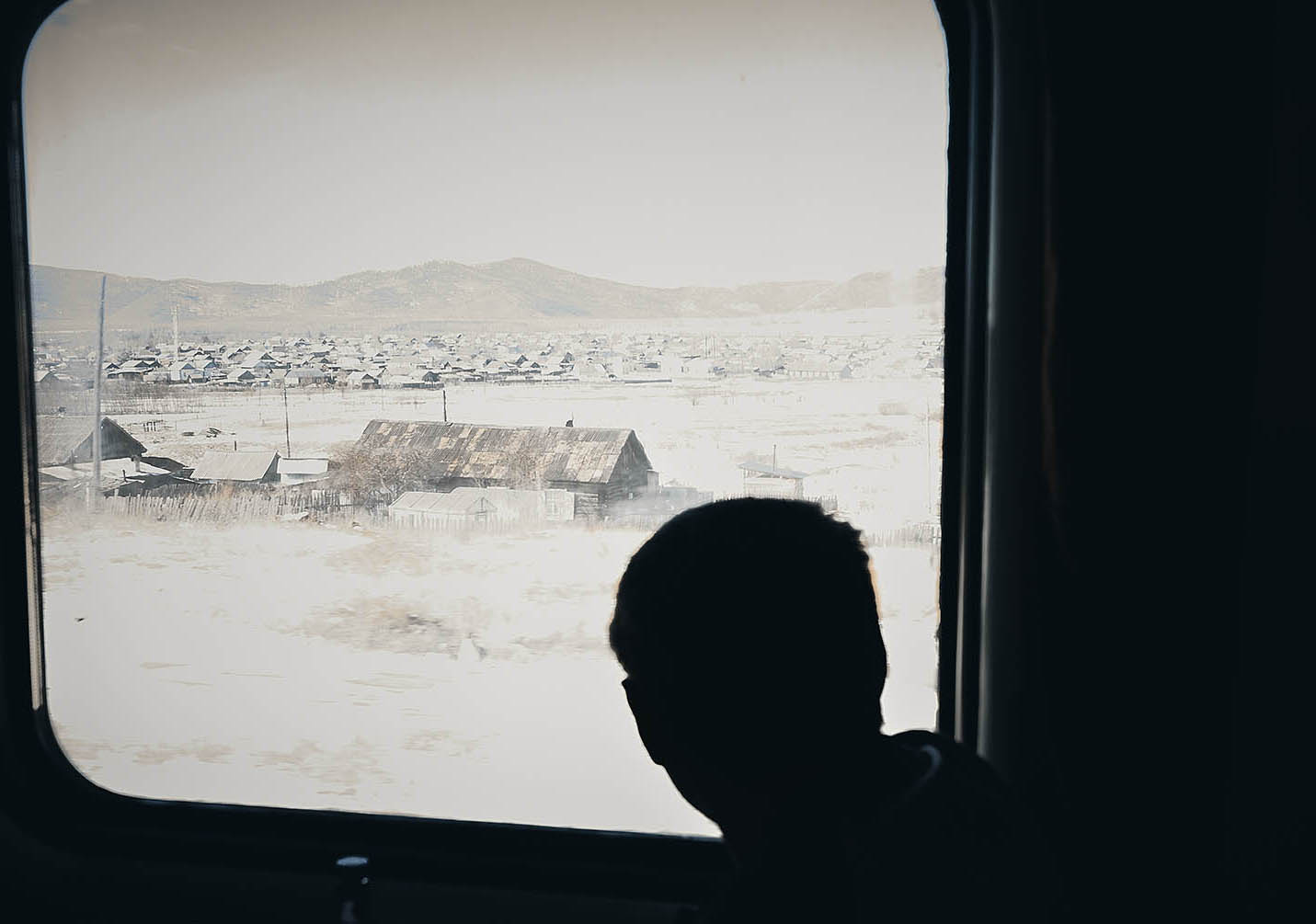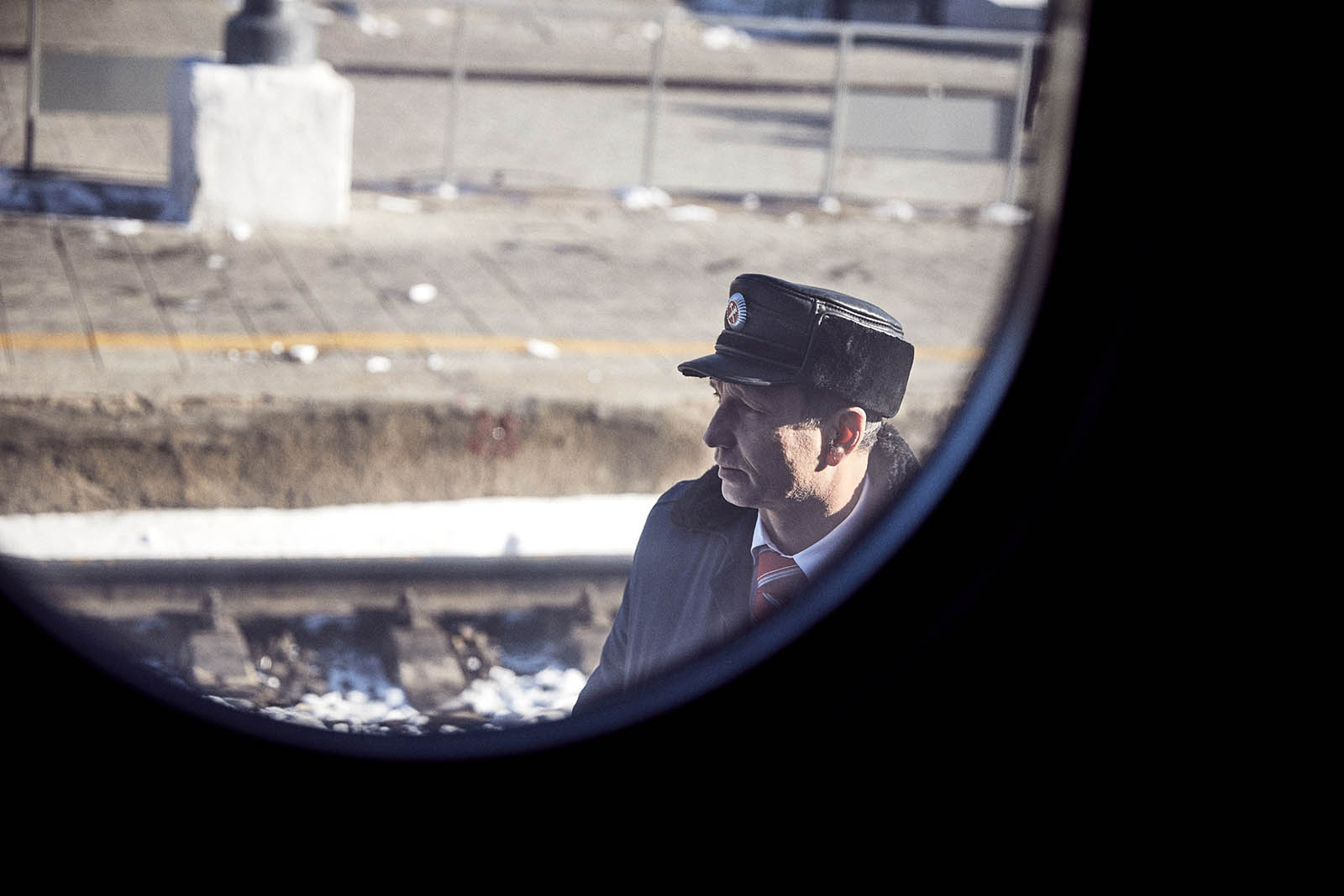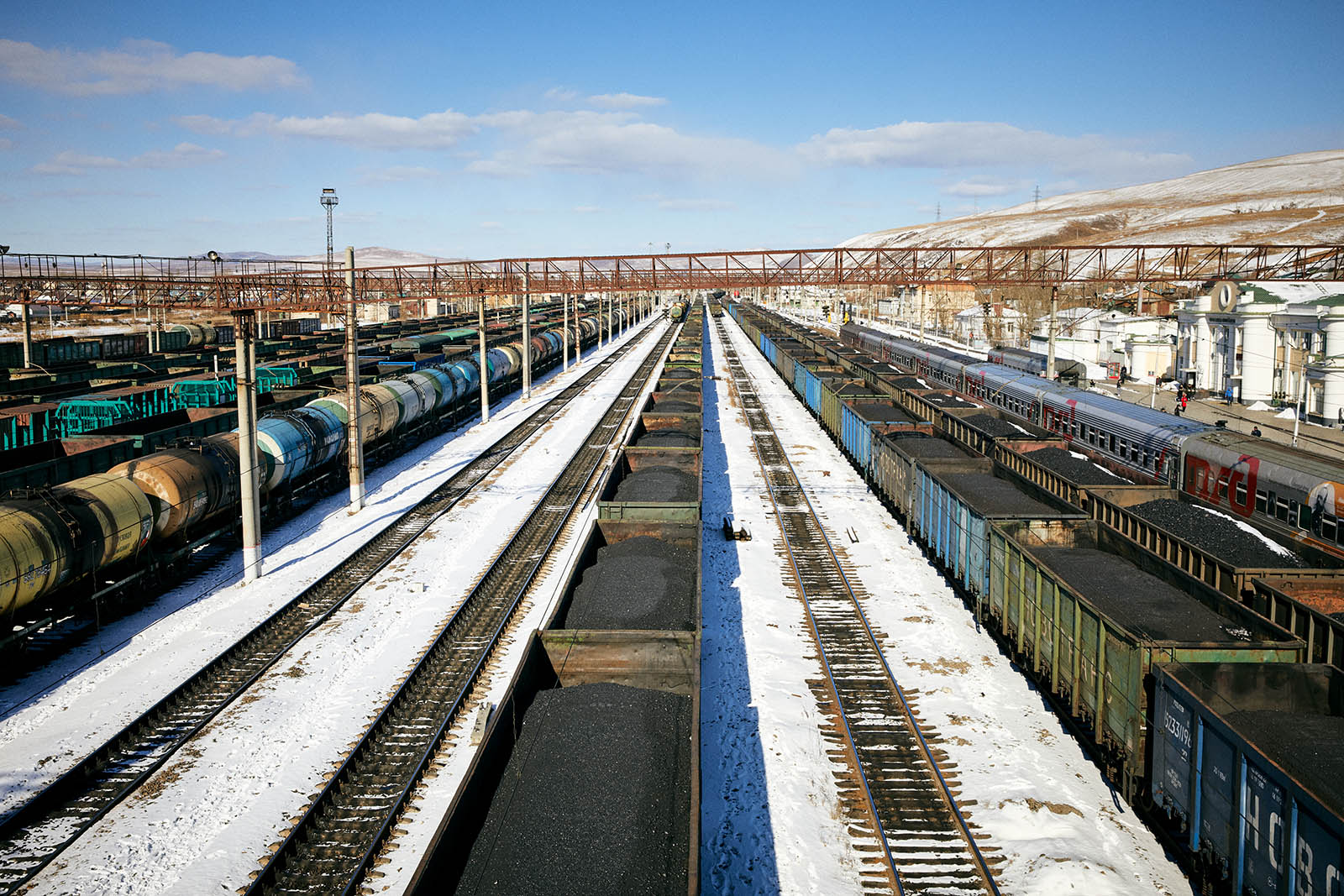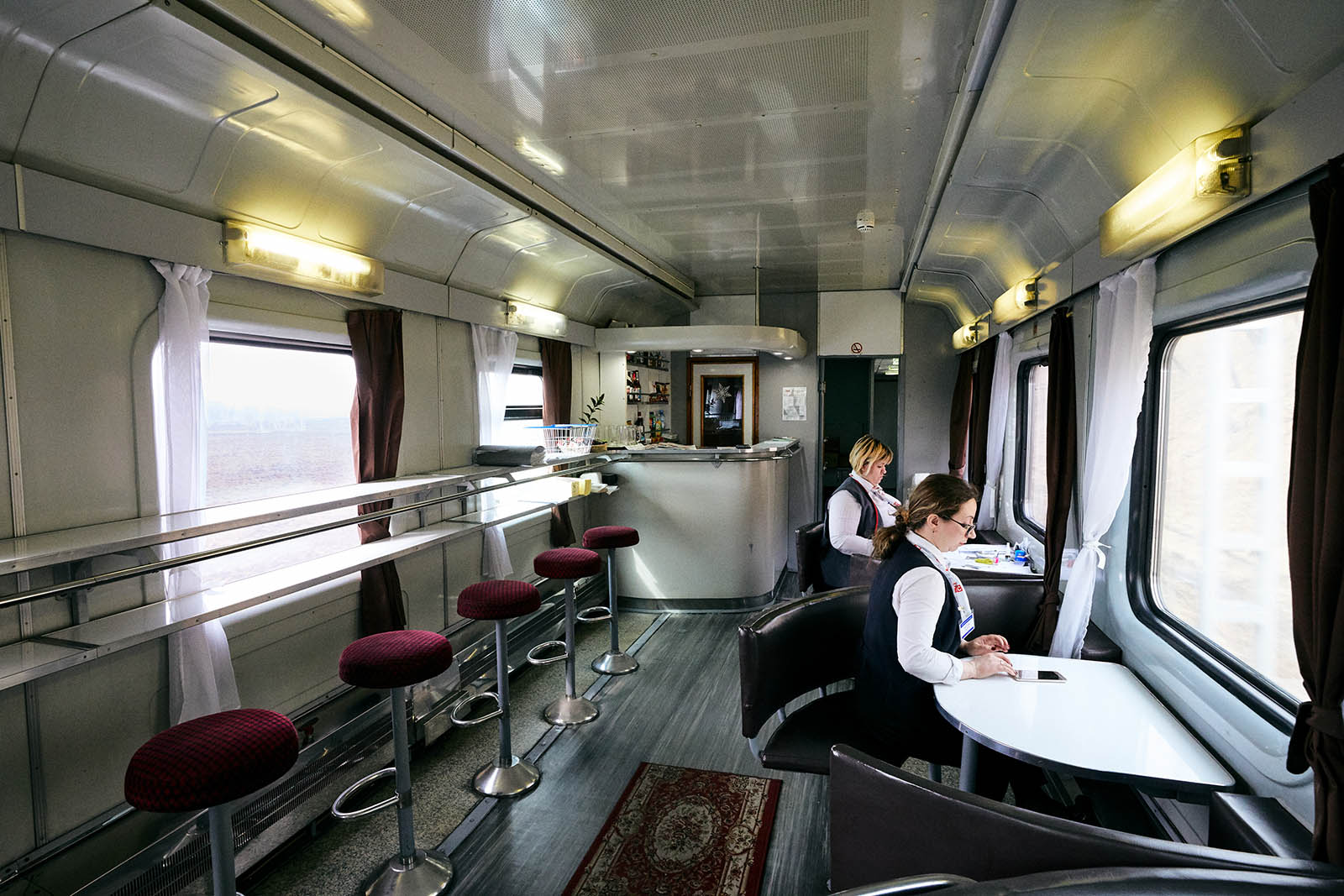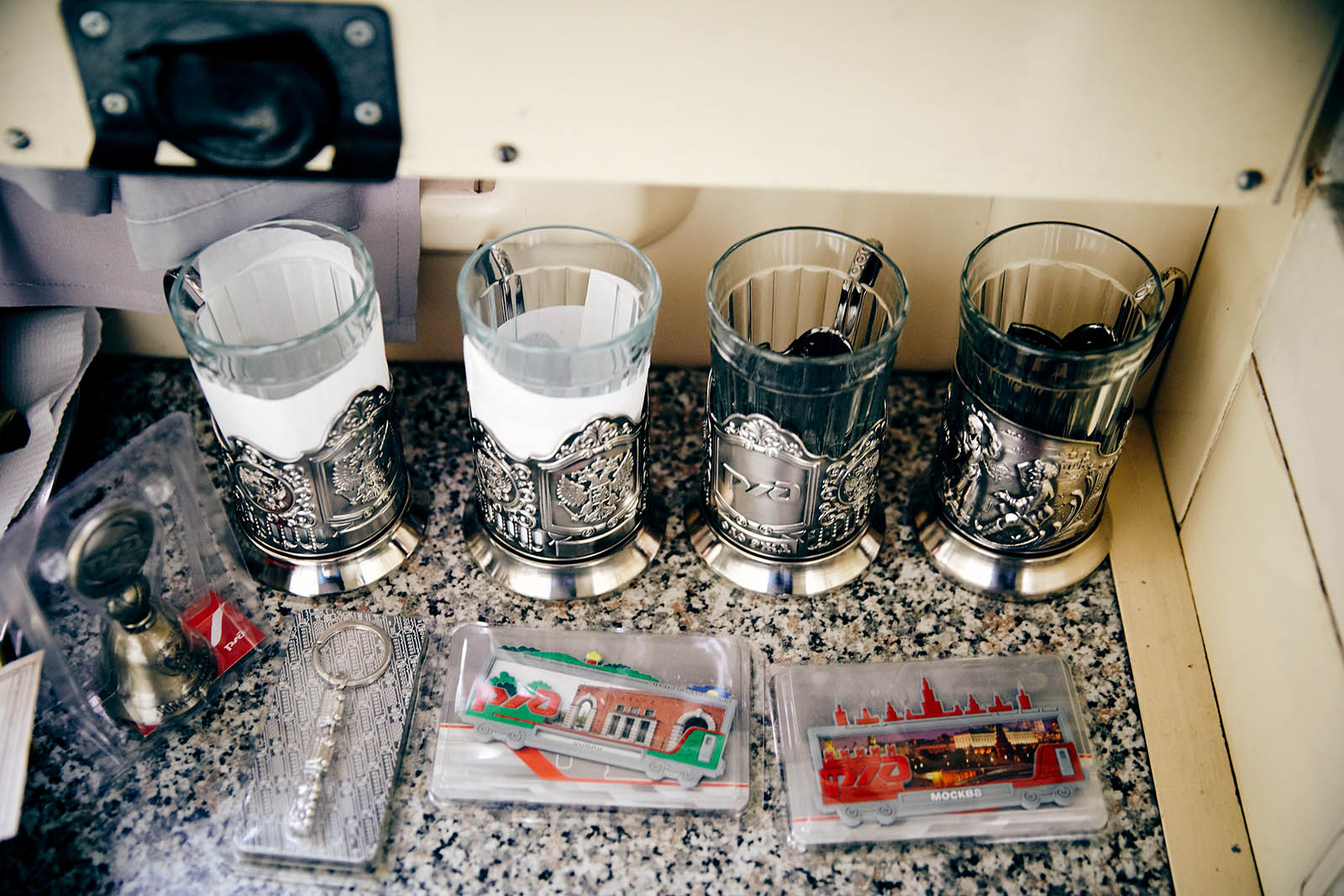It is hard to avoid superlatives when discussing Siberia: Covering over five million square miles, the region comprises 77% of Russia’s land area yet has a population of only 36 million; the hyper-clear Lake Baikal, located in southern Siberia near Mongolia, is the world’s largest freshwater lake and its deepest, containing 23% of the earth’s fresh surface water; in winter, temperatures can reach lower than -90°F. It seems appropriate then that the most significant connective tissue across this vast land, the Trans-Siberian Railway, is itself enormous. The world’s longest train route, this 5772-mile-long railway line traverses eight time zones from Moscow to Vladivostok. A journey between the two cities takes at least seven days.
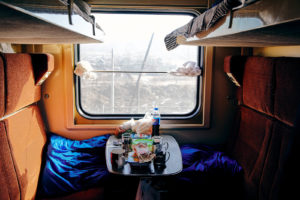 The railway’s origins are no less monumental. In 1891 during the reign of Tsar Alexander III, the 25-year construction project began under the direction of future prime minister Sergei Witte. Witte understood the economic opportunities of Siberia’s untapped natural resources, as well as the geopolitical potentials that a shift eastward could provide Russia—a move only possible with a reliable means of transportation. The construction that followed would subsequently exploit the labor of a significant number of migrants, principally from China but also from Japan, Korea, and as far away as the Mediterranean. It would also facilitate Russia’s occupation of Manchuria in 1890, which irritated Japan due to its own imperial predilections. This prompted Japan to attack Russian-controlled Port Arthur in 1904, launching the Russo-Japanese War that killed between 130,000 and 170,000 soldiers. The railway’s connection with extreme violence would continue, as thousands died in Stalin’s gulags that were spread across Siberia.
The railway’s origins are no less monumental. In 1891 during the reign of Tsar Alexander III, the 25-year construction project began under the direction of future prime minister Sergei Witte. Witte understood the economic opportunities of Siberia’s untapped natural resources, as well as the geopolitical potentials that a shift eastward could provide Russia—a move only possible with a reliable means of transportation. The construction that followed would subsequently exploit the labor of a significant number of migrants, principally from China but also from Japan, Korea, and as far away as the Mediterranean. It would also facilitate Russia’s occupation of Manchuria in 1890, which irritated Japan due to its own imperial predilections. This prompted Japan to attack Russian-controlled Port Arthur in 1904, launching the Russo-Japanese War that killed between 130,000 and 170,000 soldiers. The railway’s connection with extreme violence would continue, as thousands died in Stalin’s gulags that were spread across Siberia.
 Its tragic history notwithstanding, the line is one of the primary means of transporting goods across Russia, as well as through to Europe. The latter passage may become even more integral to both Russia and East Asia following recent political developments.
Its tragic history notwithstanding, the line is one of the primary means of transporting goods across Russia, as well as through to Europe. The latter passage may become even more integral to both Russia and East Asia following recent political developments.
In September, 2018, at the Eastern Economic Forum, North Korean Deputy Railways Minister Kim Yun Hook announced that North Korea intends to connect the railways between the Koreas. A Korean partnership has already led to some repairs of the North’s railways, which could then connect to Russia’s network. Should this project be successful, shipments by land along the popular trade route from Seoul to Rotterdam would take just 10 days, as opposed to the 30 days needed by sea. Combined with the construction of a trans-Korean gas pipeline utilizing Russian gas, this could make the Korean peninsula a much more dominant actor in the region.
 Any extension of the railways would also necessitate building new stations. This potentiality prompted landscape architects Jungyoon Kim and Yoon-Jin Park to lead a studio at Harvard’s Graduate School of Design in which the students examine a future route that connects London to Seoul—with specific focus on the Trans-Siberian Railway—to determine what interventions landscape architects could perform on such a system.
Any extension of the railways would also necessitate building new stations. This potentiality prompted landscape architects Jungyoon Kim and Yoon-Jin Park to lead a studio at Harvard’s Graduate School of Design in which the students examine a future route that connects London to Seoul—with specific focus on the Trans-Siberian Railway—to determine what interventions landscape architects could perform on such a system.
“Rather than being involved at the very beginning of building a station, landscape architects are often invited at the last minute,” Kim explained. “Architects are first going to think about the building itself, but landscape architects think about nature and then determine where a station should be and how it should look. In this way, the station comes out of nature and is not being imposed onto or into it. We chose Siberia because of its extreme natural conditions, where little human intervention has been made.”
Architects are first going to think about the building itself, but landscape architects think about nature and then determine where a station should be and how it should look. In this way, the station comes out of nature and is not being imposed onto or into it.
These interventions can take myriad forms, and they occasion different ways of conceptualizing stations than the industrial- and imperial-based concerns that dominated the building of the Trans-Siberian Railway. For example, students in the studio identified that the Chita Station in Eastern Siberia might be redesigned to assist in curbing global warming. Around this area, significant thawing of the permafrost occurs, which releases highly damaging amounts of carbon dioxide and methane deposits into the atmosphere. Reversing this trend may be possible. Based on research by biologists such as Sergey and Nikita Zimov, grazing animals might be introduced to the area to walk over this ground—as wooly mammoths and many others did in nearby areas during the Ice Age—and in doing so could potentially compact the snow and thus increase the threshold temperature for thawing. The station and its vicinity, the students propose, could be altered to provide a wildlife corridor for these animals as well as provide them shelter.
 Such projects acknowledge the ways in which the people served by these stations, and the expansive natural landscapes surrounding them, are bound together. In doing so, the work illuminates that however isolated these communities may be in terms of other societal connections, they are embedded in a landscape, both above and below ground, which in many cases extends in every direction and connects communities not just with cities and towns on the train line but also with those in Kazakhstan, China, Mongolia, the Koreas, and beyond. Unlike the rigorous visa processes required by many traveling in the region, the landscapes do not recognize borders. “Transnationality is not possible for humans, but it is for landscapes, no matter where the borderlines are drawn,” Kim says. “The steppe, for example, goes from Mongolia to Lake Baikal.” A simple continuous view from the window of the train captures this truth in ways that the discontinuity of photographs, for example, cannot convey.
Such projects acknowledge the ways in which the people served by these stations, and the expansive natural landscapes surrounding them, are bound together. In doing so, the work illuminates that however isolated these communities may be in terms of other societal connections, they are embedded in a landscape, both above and below ground, which in many cases extends in every direction and connects communities not just with cities and towns on the train line but also with those in Kazakhstan, China, Mongolia, the Koreas, and beyond. Unlike the rigorous visa processes required by many traveling in the region, the landscapes do not recognize borders. “Transnationality is not possible for humans, but it is for landscapes, no matter where the borderlines are drawn,” Kim says. “The steppe, for example, goes from Mongolia to Lake Baikal.” A simple continuous view from the window of the train captures this truth in ways that the discontinuity of photographs, for example, cannot convey.
This sense of borderlessness is conjured elsewhere on the train as well, and again through an element of design. The third-class carriages, with 54 bunks squeezed into just 600 square feet, have an open plan, and the lack of dividers between people encourages a kind of communal living that is likely foreign to train passengers not just in America or Japan but also in first class on the same train. “The unspoken ground rules [in third class] are not unlike those in second class,” author David Greene describes in his travelogue Midnight in Siberia. “If you have one of the upper berths by the window, it’s entirely okay to spend time sitting on one of the lower berths—call it a communal couch. If someone in a lower berth is sleeping and you need to climb to your upper berth, it’s fine that you may need to step on your neighbor’s bed—perhaps his or her feet or legs—to reach yours.” Sharing space naturally leads to other types of connection, principally conversation and sharing food that was either brought on the journey from home, bought from the dining car, or procured from the many women selling traditional, mostly potato-based offerings seemingly at all hours at every station.
 The latter experience may soon disappear however. These third-class carriages are scheduled to be updated in conjunction with a $10 billion investment in modernizing the tracks. The new carriages, with a projected installation in 2025, will offer privacy in the forms of capsule-like beds and will also contain showers, vending machines, and USB sockets. They will likely be more expensive too. No doubt the Russian government hopes that these innovations will help boost tourism on the route, but they will likely hurt those passengers who depend on the railway as their sole mode of transportation throughout the country, and in turn further isolate them from communities along the line. But regardless of any such changes, these local passengers will not be separated from their home stations or the surrounding landscapes, which could make interventions that further intertwine them that much more necessary.
The latter experience may soon disappear however. These third-class carriages are scheduled to be updated in conjunction with a $10 billion investment in modernizing the tracks. The new carriages, with a projected installation in 2025, will offer privacy in the forms of capsule-like beds and will also contain showers, vending machines, and USB sockets. They will likely be more expensive too. No doubt the Russian government hopes that these innovations will help boost tourism on the route, but they will likely hurt those passengers who depend on the railway as their sole mode of transportation throughout the country, and in turn further isolate them from communities along the line. But regardless of any such changes, these local passengers will not be separated from their home stations or the surrounding landscapes, which could make interventions that further intertwine them that much more necessary.
Photography by Maggie Janik

